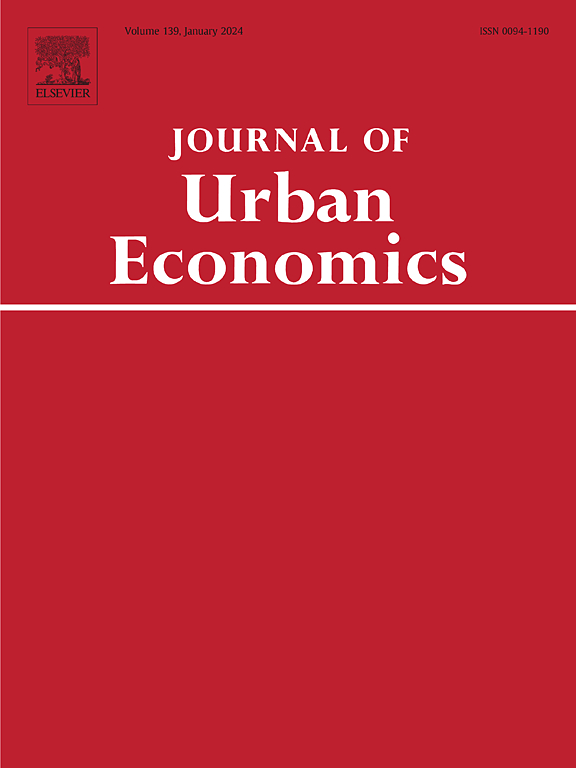Unlocking neighborhood density
IF 4.8
1区 经济学
Q1 ECONOMICS
引用次数: 0
Abstract
Studying the components of neighborhood population density reveals a complex picture that little is known about. Hidden under the same level of population density, neighborhoods can vastly differ in crowding, if residential coverage or building heights are moving in opposite directions. We study this heterogeneity in density components and how it is linked to the variation in neighborhood socio-economic characteristics that define modern cities. To do so, we use novel high-resolution (10 m 10 m) geo-spatial data on building height and footprints in combination with Norwegian register data. This data allows us to decompose the variation of density into its components, as well as along various margins. We identify urban spatial structures with a latent profile analysis. These data-driven density profiles turn out to be strongly associated with the sorting of people by socio-economic characteristics, such as income and demographic variables. Our results show that below the surface of density, there is the so-far unknown potential to learn about the prevalence and geography of socio-economic groups in the absence of micro-level data.
释放街区密度
通过研究街区人口密度的构成要素,我们可以发现一幅鲜为人知的复杂图景。隐藏在相同的人口密度水平下,如果住宅覆盖率或建筑高度朝着相反的方向发展,街区的拥挤程度就会大相径庭。我们研究了密度成分的这种异质性,以及这种异质性如何与定义现代城市的社区社会经济特征的变化相关联。为此,我们使用了新颖的高分辨率(10米×10米)建筑高度和占地面积地理空间数据,并结合挪威的登记数据。通过这些数据,我们可以将密度的变化分解为各个组成部分以及各种边缘。我们通过潜在轮廓分析确定了城市空间结构。结果表明,这些数据驱动的密度分布与人们的社会经济特征(如收入和人口变量)分类密切相关。我们的研究结果表明,在缺乏微观数据的情况下,在密度的表面之下,存在着迄今未知的了解社会经济群体的普遍性和地理分布的潜力。
本文章由计算机程序翻译,如有差异,请以英文原文为准。
求助全文
约1分钟内获得全文
求助全文
来源期刊

Journal of Urban Economics
Multiple-
CiteScore
10.60
自引率
4.80%
发文量
64
期刊介绍:
The Journal of Urban Economics provides a focal point for the publication of research papers in the rapidly expanding field of urban economics. It publishes papers of great scholarly merit on a wide range of topics and employing a wide range of approaches to urban economics. The Journal welcomes papers that are theoretical or empirical, positive or normative. Although the Journal is not intended to be multidisciplinary, papers by noneconomists are welcome if they are of interest to economists. Brief Notes are also published if they lie within the purview of the Journal and if they contain new information, comment on published work, or new theoretical suggestions.
 求助内容:
求助内容: 应助结果提醒方式:
应助结果提醒方式:


